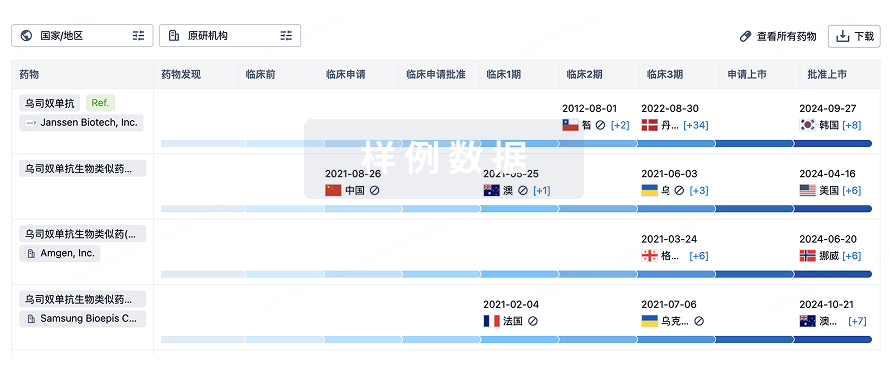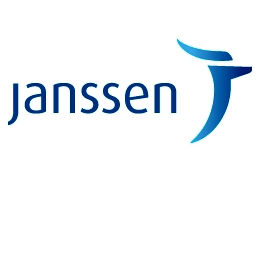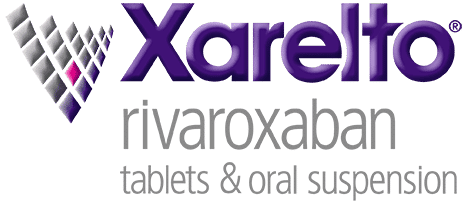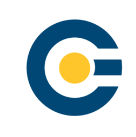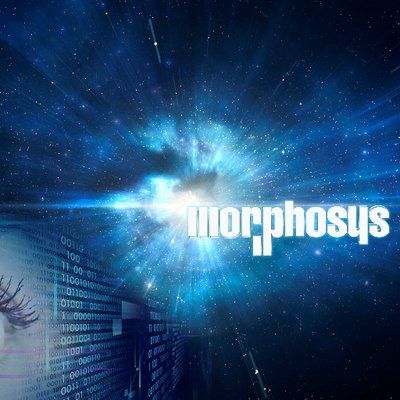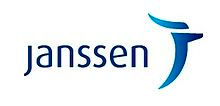*仅供医学专业人士阅读参考
盘点2025皮科新药获批信息,快收藏!
撰文:Nina
2025年,是全球皮肤科诊疗的“突破年”。美国食药监局(FDA)在今年批准了多个创新疗法,包括首个用于治疗隐性营养不良型大疱性表皮松解症(RDEB)的基因疗法和首个用于治疗传统糖皮质激素无效或不适用的中重度手部湿疹(CHE)的Janus激酶(JAK)抑制剂等。
2025年,也是我国自主创新药物的“丰收年”。在今年,我国首个自主研发的高选择性JAK1抑制剂艾玛昔替尼连续获批2项皮科适应症和2项风湿免疫疾病适应症、国内首个IL-12/IL-23双靶向全人源单抗依若奇单抗获批用于中重度斑块状银屑病治疗、首个外用非那雄胺制剂获批用于雄激素性脱发适应症……
为盘点2025皮肤病治疗领域创新药物获批情况,全面展现皮科诊疗年度突破,本期推送将对FDA和中国食药监局(NMPA)在2025年批准的皮肤科创新治疗药物进行盘点记录,为皮肤科医生提供清晰可查的新药资讯。
表1:2025年FDA与NMPA批准皮科创新药物一览表
FDA:多种创新疗法获批,让皮肤病治疗更精准,让患者更舒适!
2025年是皮肤科治疗领域具有变革性的一年,FDA批准了一系列创新疗法,覆盖多种皮肤疾病,包括慢性自发性荨麻疹(CSU)、特应性皮炎、银屑病、大疱性类天疱疮(BP)和罕见遗传性疾病等。
▌度普利尤单抗获批用于H1抗组胺药疗效不佳的CSU治疗与成人BP治疗
4月18日,FDA批准度普利尤单抗用于≥12岁、经H1抗组胺药治疗仍控制不佳的慢性自发性荨麻疹(CSU)患者。该批准基于Ⅲ 期 LIBERTY-CSU CUPID 研究项目的数据。研究显示,与安慰剂相比,度普利尤单抗显著改善瘙痒和风团严重程度,且实现疾病良好控制的患者比例显著更高[1]。
6月20日,度普利尤单抗获FDA批准用于成人大疱性类天疱疮(BP)治疗,成为该疾病首个靶向生物制剂[2]。该获批基于LIBERTY-BP研究(NCT04206553)结果:与安慰剂联合糖皮质激素减量方案相比,度普利尤单抗显著提高持续缓解率(18.3% vs 6.1%),明显减轻瘙痒,并降低累计糖皮质激素使用量[2]。
▌全球首个RDEB自体细胞基因治疗获批
4月29日,Prademagene zamikeracel(pz-cel)作为首个用于隐性营养不良性大疱性表皮松解症(RDEB)的自体细胞基因治疗获得FDA批准,标志着再生皮肤病学的重要突破。
该疗法利用患者自身皮肤细胞,在体外导入功能性COL7A1基因后制成细胞片,一次性外科手术应用于慢性创面,从而恢复Ⅶ型胶原蛋白的持续表达并促进伤口愈合[3]。
▌罗氟司特泡沫获批用于斑块状银屑病治疗
5月22日,罗氟司特0.3%泡沫剂获FDA批准用于≥12岁患者头皮及躯干的斑块状银屑病,成为全球首个也是目前唯一的斑块状银屑病外用泡沫制剂。其Ⅲ期研究(ARRECTOR 研究,NCT05028582) 显示,63%的患者在8周内实现皮损明显清除,患者的瘙痒症状可在24小时内获得控制。新闻报道指出,该泡沫制剂特别适用于毛发部位和敏感皮肤区域,刺激性低,耐受性良好[4]。
▌Delgocitinib(德戈替尼)获批成人中重度CHE适应症
7月23日,FDA批准获批德戈替尼治疗对外用糖皮质激素疗效不佳或不适合使用激素的成人中重度慢性手湿疹(CHE)患者,为该类型患者提供了首个精准治疗方案。该获批是基于Ⅲ期DELTA-1与DELTA-2研究结果:20%~29%的CHE患者在治疗期间达到“皮损完全或几乎完全清除”,显著优于对照组[5]。
▌芦可替尼乳膏获批用于2~11岁儿童AD
9月18日,芦可替尼乳膏获得FDA 批准,用于2~11岁轻到中度特应性皮炎(AD)患儿,成为首个获批用于该年龄段的外用JAK抑制剂。Ⅲ期研究TRuE-AD3(NCT04921969) 显示,36%~57%的患儿达到研究者总体评估(IGA) 治疗成功应答,瘙痒改善迅速,且未观察到与口服JAK抑制剂相关的系统性安全信号[6]。
▌古塞奇尤单抗获批用于儿童银屑病及银屑病关节炎
9月29日,古塞奇尤单抗获得FDA批准用于治疗≥6岁(体重≥40kg)的中重度斑块状银屑病或活动性银屑病关节炎患儿,成为首个获批用于儿童人群的IL-23抑制剂[7]。本次获批基于Ⅲ 期 PROTOSTAR研究(NCT03451851)结果:第16周时,56%的患者实现PASI 90,应答显著优于安慰剂。
▌雷米布替尼成为首个用于CSU的BTK抑制剂
9月30日,FDA批准雷米布替尼(remibrutinib) 用于治疗经H1抗组胺药治疗仍有症状的成人CSU患者,为该类型患者提供了首个BTK抑制剂。该药物的关键Ⅲ期研究REMIX-1与REMIX-2显示,治疗12周后,约三分之一患者实现症状完全缓解[8]。
▌罗氟司特乳膏适应症人群扩展至2~5岁AD患儿
10月6日,罗氟司特0.05%乳膏获FDA批准用于2~5岁轻中度AD儿童的治疗。INTEGUMENT-PED与INTEGUMENT-OLE研究表明,该无激素、每日一次的外用治疗可在4周内显著改善皮损和瘙痒,耐受性良好[9]。
从靶向炎症因子的生物制剂,到JAK抑制剂等小分子药物的精准调控,再到针对遗传性皮肤病的细胞与基因治疗……FDA在2025年批准的创新药物与治疗方案不仅显著拓宽了治疗边界,也重塑了多种皮肤疾病的管理路径。与此同时,儿童人群适应证的持续拓展、无激素外用方案的成熟以及对长期安全性和生活质量的高度关注,标志着皮肤病治疗正进一步走向“长期、个体化、可持续”的管理范式。
NMPA:中国原研药持续发力,让治疗更加可及!
2025年,中国原研药在皮肤免疫性疾病领域迎来密集收获期,多款创新药通过国家药品监督管理局(NMPA)审批上市。国产原研药以高质量的Ⅲ期临床数据证明了中国创新药的研发实力,为患者提供了疗效确切、使用便利且经济可及的治疗新选择。
▌艾玛昔替尼于2025年连续获批中重度AD与斑秃适应症
4月1日,中国首个自主研发的高选择性JAK1抑制剂硫酸艾玛昔替尼片继强直性脊柱炎、类风湿关节炎两大适应症后,再度获批了今年的第三个适应症,用于治疗对局部外用治疗或其他系统性治疗应答不充分或不耐受的中重度特应性皮炎成人患者。此次获批是基于Ⅲ期临床研究的积极数据。研究结果显示,硫酸艾玛昔替尼片在临床试验中表现出了良好的有效性和安全性。此外,硫酸艾玛昔替尼片每日口服一片(4mg),服用便捷,为广大特应性皮炎患者带来更多用药选择[10]。
6月24日,硫酸艾玛昔替尼片获国家药品监督管理局批准新适应症,适用于成人重度斑秃患者。此次获批是基于一项随机、双盲、安慰剂对照Ⅲ期临床试验的积极数据:治疗第8周,艾玛昔替尼4mg组和8mg组SALT评分≤20应答率均高于安慰剂组;第24周,4mg组和8mg组SALT评分≤20应答率分别为34.9%和40.6%。52周治疗期间SALT评分持续降低;第52周,4mg组和8mg组SALT评分≤20应答率分别为46.8%和63.1%。随症状改善,患者对头发再生的满意度与接受度显著优于安慰剂组。安全性方面,整体安全性好,24周核心治疗期不良事件(TEAEs)发生率与安慰剂组相似[11]。
▌依若奇单抗获批中重度斑块状银屑病
4月18日,NMPA批准首个且目前唯一一个国产原研IL-12/IL-23“双靶向”单克隆抗体新药——依若奇单抗上市,适用于对环孢素、甲氨蝶呤等其他系统性治疗或补骨脂素和紫外线A(PUVA)不应答、有禁忌或无法耐受的中度至重度斑块状银屑病的成年患者的治疗[12]。本次获批主要基于依若奇单抗的两项关键Ⅲ期研究结果:治疗组患者第16周PASI 75比例高达79.4%、每12周1次(Q12W)维持治疗期间疗效长期稳定,至第52周的PASI 75仍高达77.9%;该药物用药便捷性高,安全性良好,对患者生活质量具有显著改善[13]。
▌非那雄胺喷雾剂成为我国首个治疗雄激素性脱发的外用非那雄胺制剂
6月30日,非那雄胺喷雾剂(CU-40102)获NMPA批准,用于雄激素性脱发治疗,成为全球首个获批该适应症的外用非那雄胺[14]。中国Ⅲ期临床试验显示[15]:治疗24周后,药物组顶部目标区域总毛发计数(11.96根/cm²)和终毛计数显著优于安慰剂组(6.68根/cm²),疗效自12周起显现[16]。
▌莫米司特获批中重度银屑病适应症
9月30日,NMPA通过优先审评审批程序批准米司特片上市,该药适用于治疗符合接受光疗或系统治疗指征的中度至重度斑块状银屑病的成人患者[17],该药物是首个获批上市的国产原研PDE4抑制剂。本次获批主要基于该药物治疗斑块状银屑病的Ⅲ期研究:治疗16周时,莫米司特组达到PASI-75的患者比例显著高于安慰剂组(53.6% vs 16.0%)[18]。
▌匹康奇拜单抗获批
11月25日,匹康奇拜单抗注射液获得NMPA批准,用于治疗适合系统性治疗的中重度斑块状银屑病成人患者[19],该药物是中国首个由本土企业自主研发的IL-23p19靶点单抗药物。本次获批主要基于关键Ⅲ期研究CLEAR-1结果:匹康奇拜单抗)在第16周达到PASI90的比例为80.3%,据报道,该药物也是全球首个注册Ⅲ期临床主要研究终点第16周达到PASI90的受试者比例突破80%的IL-23p19抗体药物[20]。
纵观2025年获批的原研新药概况,中国皮肤科治疗领域已形成“靶向精准、剂型创新、疗效突破”的全面布局,随着本土创新药企研发管线持续转化,中国患者将优先受益于更具成本效益的先进疗法。
总结:
2025年,全球皮肤科治疗迎来范式革新。FDA引领的基因疗法与精准靶向药持续拓宽边界,而中国原研药以同等高效的Ⅲ期数据与更优可及性强势崛起,从JAK1到IL-23p19实现靶点全覆盖,标志着中国创新从“跟跑”转向“并跑”甚至“领跑”。
参考文献:
[1]https://www.globenewswire.com/news-release/2025/04/18/3064133/0/en/Dupixent-dupilumab-Approved-in-the-US-as-the-First-New-Targeted-Therapy-in-Over-a-Decade-for-Chronic-Spontaneous-Urticaria-CSU.html
[2]https://www.sanofi.com/en/media-room/press-releases/2025/2025-06-20-05-00-00-3102518
[3]https://investors.abeonatherapeutics.com/press-releases/detail/303/us-fda-approves-zevaskyn-prademagene-zamikeracel
[4]https://www.arcutis.com/arcutis-zoryve-roflumilast-topical-foam-0-3-approved-by-us-fda-for-the-treatment-of-plaque-psoriasis-in-adults-and-adolescents-ages-12-and-older/
[5]https://www.businesswire.com/news/home/20250723115252/en/ANZUPGO-delgocitinib-Cream-Is-Now-the-First-and-Only-FDA-Approved-Treatment-for-Moderate-to-Severe-Chronic-Hand-Eczema-CHE-in-Adults
[6]https://investor.incyte.com/news-releases/news-release-details/incyte-announces-additional-fda-approval-opzelurar-ruxolitinib
[7]https://www.jnj.com/media-center/press-releases/us-fda-approves-tremfya-guselkumab-for-the-treatment-of-pediatric-plaque-psoriasis-and-active-psoriatic-arthritis-marking-a-first-and-only-approval-for-an-il-23-inhibitor
[8]https://www.globenewswire.com/news-release/2025/09/30/3159065/0/en/Novartis-receives-FDA-approval-for-Rhapsido-remibrutinib-the-only-oral-targeted-BTKi-treatment-for-chronic-spontaneous-urticaria-CSU.html
[9]https://www.globenewswire.com/news-release/2025/10/06/3161656/0/en/FDA-Approves-Arcutis-ZORYVE-roflumilast-Cream-0-05-for-the-Treatment-of-Atopic-Dermatitis-in-Children-Ages-2-to-5.html
[10]http://www.news.cn/digital/20250410/7a79030a118e44a5bbea1045cffff07a/c.html
[11]https://www.hengrui.com/media/detail-805.html
[12]https://www.nmpa.gov.cn/directory/web/nmpa/zhuanti/zt2023/ypgzhlfzh/shypqxgg/ggjzcx/20250418171520192.html
[13]https://www.akesobio.com/cn/media/akeso-news/20250418/
[14]https://www.nmpa.gov.cn/zhuanti/cxylqx/cxypxx/20251201154830142.html
[15]https://finance.sina.com.cn/stock/bxjj/2025-06-30/doc-infcvyap6387219.shtml?froms=ggmp
[16]Zhou C, Yang B, Zeng H, et al. Efficacy and safety of topical finasteride spray solution in the treatment of Chinese men with androgenetic alopecia: A phase III, multicenter, randomized, double-blind, placebo-controlled study[J]. Chinese Medical Journal, 2025: 10.1097.
[17]https://www.nmpa.gov.cn/directory/web/nmpa/zhuanti/cxylqx/cxypxx/20251013084802179.html
[18]Jones C, Zhang J, Wang L, Dai X, Wang H, Bi X, Duan X, Meng Z, Tian Z, Xu A, Yang B, Guo S, Li W, Diao Q, Fang H, Liu Y, Fan J, Yan M, Lin S, Zhu M, Hu x, Lin J, Bi M. A Double-blind, Placebo-parallel Controlled Phase III Clinical Study of the Efficacy and Safety of Hemay005 Tablets in Patients with Moderate to Severe Chronic Plaque Psoriasis in China [abstract]. Arthritis Rheumatol. 2023; 75 (suppl 9). https://acrabstracts.org/abstract/a-double-blind-placebo-parallel-controlled-phase-iii-clinical-study-of-the-efficacy-and-safety-of-hemay005-tablets-in-patients-with-moderate-to-severe-chronic-plaque-psoriasis-in-china/. Accessed December 24, 2025.
[19]https://www.nmpa.gov.cn/zhuanti/cxylqx/cxypxx/20251201154830142.html
[20]https://www.sipac.gov.cn/szghjswyh/gzdt/202511/37620e5b76c2464da24c8fa31c9312ff.shtml
责任编辑:大晨
*"医学界"力求所发表内容专业、可靠,但不对内容的准确性做出承诺;请相关各方在采用或以此作为决策依据时另行核查。
↓↓↓点击「阅读原文」学习更多临床技能







